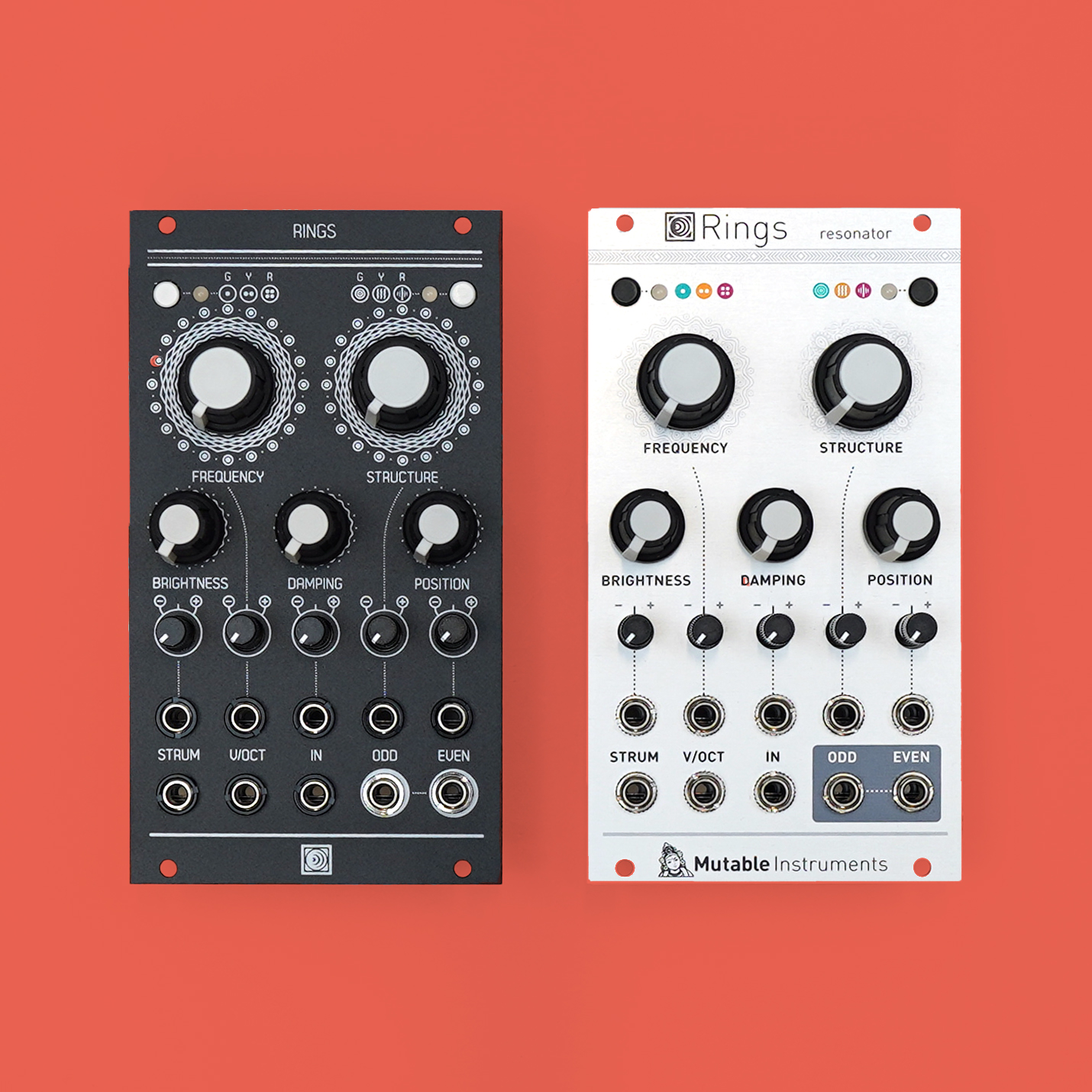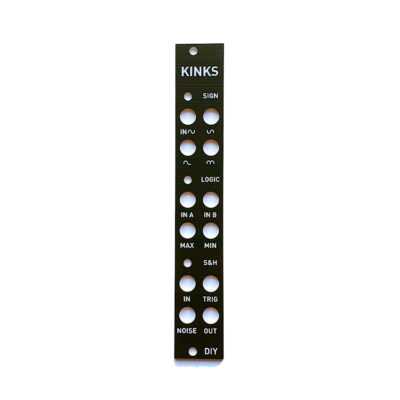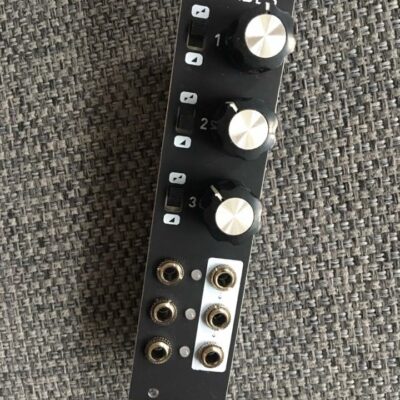Description
Rings brings physical modelling synthesis to your Eurorack system, from a more modular angle than Braids’ models or Elements. Instead of trying to be a complete instrument, Rings focuses on the key ingredient, the resonator, ready to be excited by envelope clicks, trigger pulses, granular noise or any other audio source produced by the rest of your system.
Three families of vibrating structures are simulated by the module, with CV control over their parameters:
- Strings, membranes and tubes as modelled by Elements’ resonator section (modal synthesis).
- Strings coupled together and vibrating in sympathy, with controllable intervals between them.
- Strings with a variable amount of inharmonicity.
Rings can be configured so that each new note is played on its own virtual string, while the previously played note(s) still decay. This unique take on polyphony allows the module to play strummed chords.
CONTROLS
- Number of strings/structures (1, 2 or 4).
- Synthesis model (modal, sympathetic strings, string).
- Main frequency (quantized in semitones).
- Structure. With the modal and string models, controls the inharmonicity of the spectrum (which directly impacts the perceived “material”). With the sympathetic strings model, controls the intervals between strings.
- Brightness. Specifies the brightness and richness of the spectrum.
- Damping. Controls the damping rate of the sound, from 100ms to 10s.
- Position. Specifies at which point the structure is excited.
INPUTS AND OUTPUTS
- Frequency, structure, brightness, damping and position modulation CV inputs with attenuverter (-8V to +8V).
- “Strum” trigger input to indicate when a new polyphony voice needs to be allocated. Normalized to an edge detector detecting changes on the main V/Oct input, or sharp transients on the audio input. Detection threshold at 0.6V.
- 1 V/Oct frequency input (-1V to +5V).
- Resonator audio input, normalized to a filtered pulse/noise burst triggered by the “Strum” input (for stand-alone use). Modular level, up to 16Vpp.
- Two audio outputs, splitting the signal into even/odd partials in monophonic operation, or even/odd notes in polyphonic operation.
TECHNICAL CHARACTERISTICS
- Input impedances: 100k.
- AD/DA: 16-bit, 48kHz.
- Internal processing: 32-bit floating point.
- Open-source hardware and firmware.
- Easy firmware updates through an audio interface.
- Cortex-M4 ARM processor.
- 14-HP.
- Current consumption: +12V: 110mA ; -12V: 5mA.
http://mutable-instruments.net/modules/rings
Code (AVR projects): GPL3.0.
Code (STM32F projects): MIT license.
Hardware: cc-by-sa-3.0
By: Emilie Gillet (emilie.o.gillet@gmail.com)





